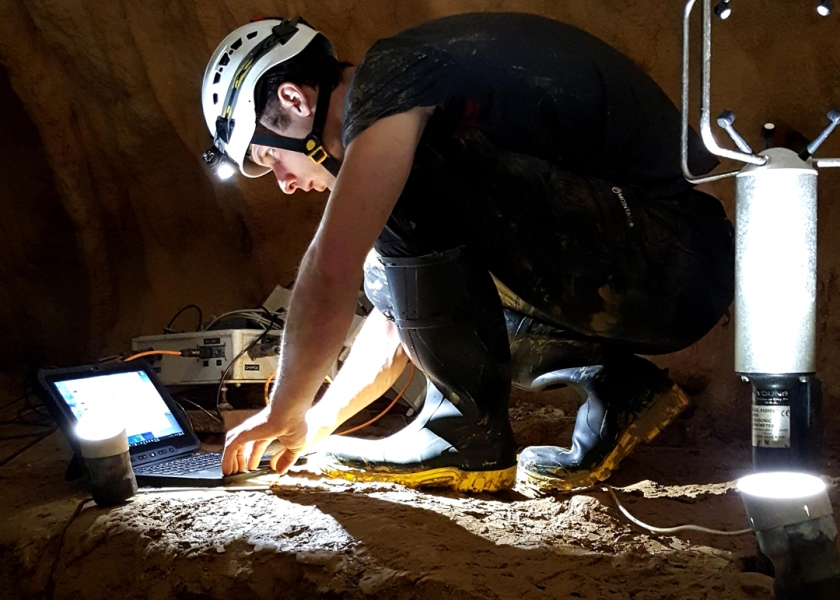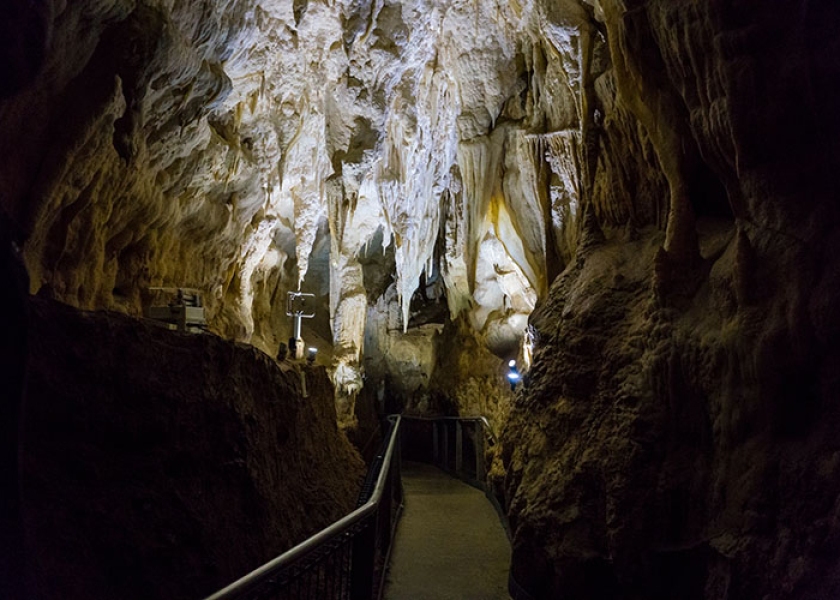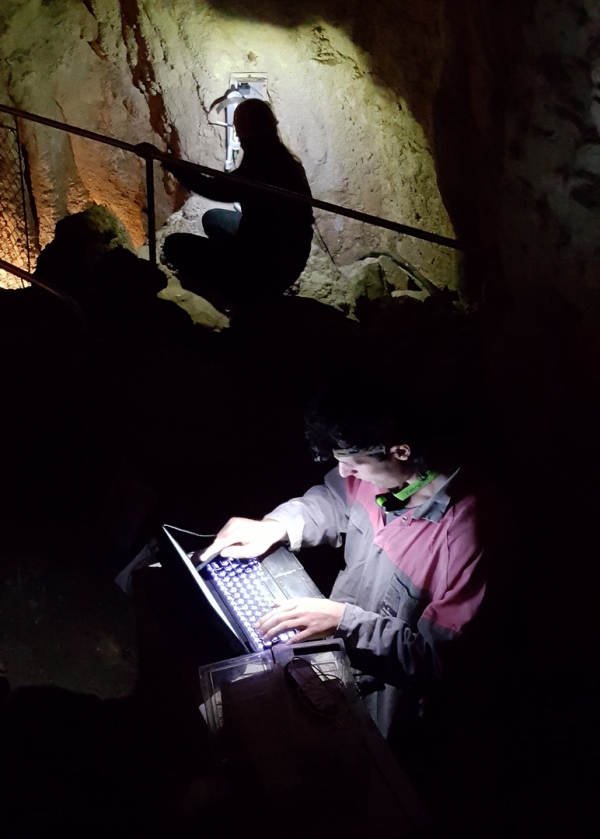Once a year, technicians from NIWA’s North Island Field Team don helmets and head lamps to check a network of CO2 sensors in the world-renowned Waitomo Caves. The sensors help make sure that heavy breathing visitors aren’t wrecking the caves’ precious natural structures and microclimate.
We’ve known for decades that high CO2 levels are bad for the caves. Things start going downhill at 2400 parts per million (ppm). That threshold was determined by the Department of Scientific and Industrial Research in the 1970s.
Environmental monitoring technician Carl Fischer says there’s a fine balance between letting people in to enjoy the caves and protecting the caves from damage.
“On the one hand, the cave operator has visitors who are a source of CO2. On the other hand, they have a consent requirement that CO2 doesn’t exceed the threshold. Monitoring is needed to demonstrate compliance with the threshold and manage visitor numbers.”
It took a collapse of the Waitomo Glowworm Cave glowworm population in the 1970s to realise just how finely tuned things need to be.
CO2 has a big effect on precipitation processes that create speleothem cave formations. The most well-known types of speleothem are stalagmites (which grow from the ground up) and stalactites (from the roof down).
Speleothems are created as water percolates into the cave. At Waitomo Caves that can only happen if CO2 in the cave atmosphere is less than the CO2 dissolved in the percolation water. If CO2 is below about 2400ppm, percolation water will precipitate calcite and create speleothems. If it’s above 2400ppm, the water becomes acidic and will corrode the cave formations.
Ventilation and door control help control CO2 when the numbers get out of whack.
“The biggest source of CO2 in the cave is people [breathing]. The biggest sink is ventilation. Both are constantly in flux. Ventilation depends on the thermal gradient between the inside and outside of the cave. Thermal gradient and visitor numbers are continuously changing on a seasonal, daily and hourly basis,” says Carl.
The cave operator – Tourism Holdings Ltd – won't hesitate to close the caves if CO2 levels get too high.
NIWA’s sensors communicate CO2 data in real-time from Aranui, Ruakuri and Waitomo Caves. They also measure air temperature, humidity, water level, water temperature and cave door status.
As part of a contract with Tourism Holdings Ltd, NIWA tests and annually calibrates the sensors. We also sit alongside Department of Conservation, iwi, glowworm and cave conservation experts on the Waitomo Environmental Advisory Group.



